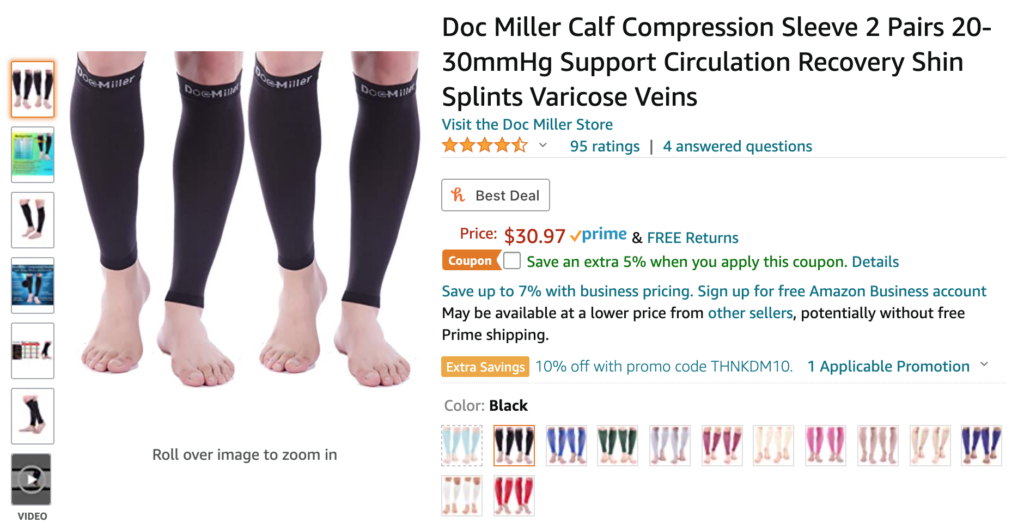Varicose veins are swollen, enlarged veins most often found in the legs. They are usually blue or purple in color and may bulge, twist, and stand out under the skin.
Normally, veins return blood from the body to the heart. The leg veins have one-way valves that prevent blood from flowing backward in the vein. When the valves are weak or damaged, blood backs up in the veins. This may cause some of the veins to swell and bulge and become varicose veins.
Symptoms
Varicose veins may or may not cause symptoms. If symptoms do occur, they can include:
- Legs that feel tired, achy, heavy, or itchy
- Leg muscle cramps
- Skin changes, such as discoloration, dryness, redness, or rash (in more severe cases, you may also have sores on the skin called venous leg ulcers)
Risk factors
There are a number of factors that increase the risk for varicose veins. These can include:
- Being a woman
- Being older
- Sitting or standing for long periods
- Being overweight
- Being pregnant
- Having a family history of varicose veins
Treatment starts with simple self-help measures (see below). If these don’t help, there are many procedures that can be done to shrink or remove varicose veins. Your healthcare provider can tell you more about these options, if needed.
Home care
- Support or compression stockings will likely be prescribed. If so, be sure to wear them as directed. They may help improve blood flow.
- Exercising helps strengthen your leg muscles and improve blood flow. To get the most benefit, choose exercises such as walking, swimming, or cycling. Also try to exercise for at least 30 minutes on most days.
- Raising (elevating) your legs lets gravity help blood flow back to the heart. Sit or lie with your feet above heart level a few times throughout the day, or as directed.
- Don’t sit or stand for long periods. Change positions often. Also, move your ankles, toes and knees often. This may also help improve blood flow.
- If you are overweight, talk with your healthcare provider about setting up a weight-loss plan. Maintaining a healthy weight can help reduce the strain on your veins. It may also improve symptoms, such as swelling and aching.
- If you have dryness and itching, ask your provider about special lotions that can be applied to the skin to help improve symptoms.
Follow-up care
Follow up with your healthcare provider, or as directed. If imaging tests were done, you’ll be told the results and if there are any new findings that affect your care.
When to seek medical advice
Call your healthcare provider right away if any of these occur:
- Sudden, severe leg swelling, pain, or redness
- Symptoms worsen, or they don’t improve with self-care
- Bleeding from any affected veins
- Ulcers form on the legs, ankles, or feet
- Fever of 100.4°F (38°C) or higher, or as advised by your provider
